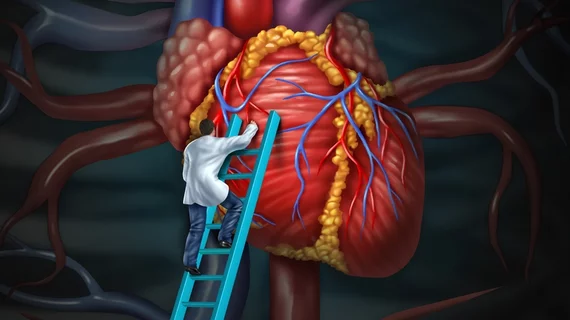Pressure-regulated transcatheter heart valve (THV) deployment is safe and effective, according to a new study published in JACC: Cardiovascular Interventions. The study’s authors also suggest this method could boost patient outcomes over time.
“Currently, balloon-expandable THV deployment protocols are ‘volume regulated,’ relying on under- or overfilling of the deployment balloon according to operator preference and/or specific patient characteristics,” wrote lead author Afik Snir, a specialist at Macquarie University Hospital in Australia, and colleagues. “However, the imprecise nature of these methods results in wide procedural variations in practice, predisposing patients to inconsistent clinical outcomes. Furthermore, the issue of annular rupture remains unresolved, particularly in high-risk patients with heavily calcified and/or small annular anatomies.”
Snir et al. examined the potential of pressure-regulated deployment by focusing on a group of 330 patients with severe native aortic stenosis who underwent transcatheter aortic valve replacement (TAVR) with the balloon-expandable Sapien 3 THV manufactured by Edwards Lifesciences. The mean patient age was 82.6 years old, the mean Society of Thoracic Surgeons score was 4.5 and 71.3% of patients were men.
All TAVR patients underwent CT and transthoracic echocardiography before the procedure. Wall stress was calculated for each patient and presented in megapascals (MPa). Clinicians began with relatively low inflation targets (4 to 4.5 atm) early on, moving on to higher targets (5 to 6.5 atm) as the study continued.
Overall, the group found, this method was “simple, reproducible, safe and effective.” There were two cases of annular rupture, and both occurred when the patient had a wall stress higher than 3.5 MPa.
The team did note that further research was still needed to validate the effectiveness of this method.
“We believe that this paradigm shift in balloon-expandable TAVR could lead to greater consistency and further improvement in patient outcomes,” the authors concluded.
The full analysis is available here.

